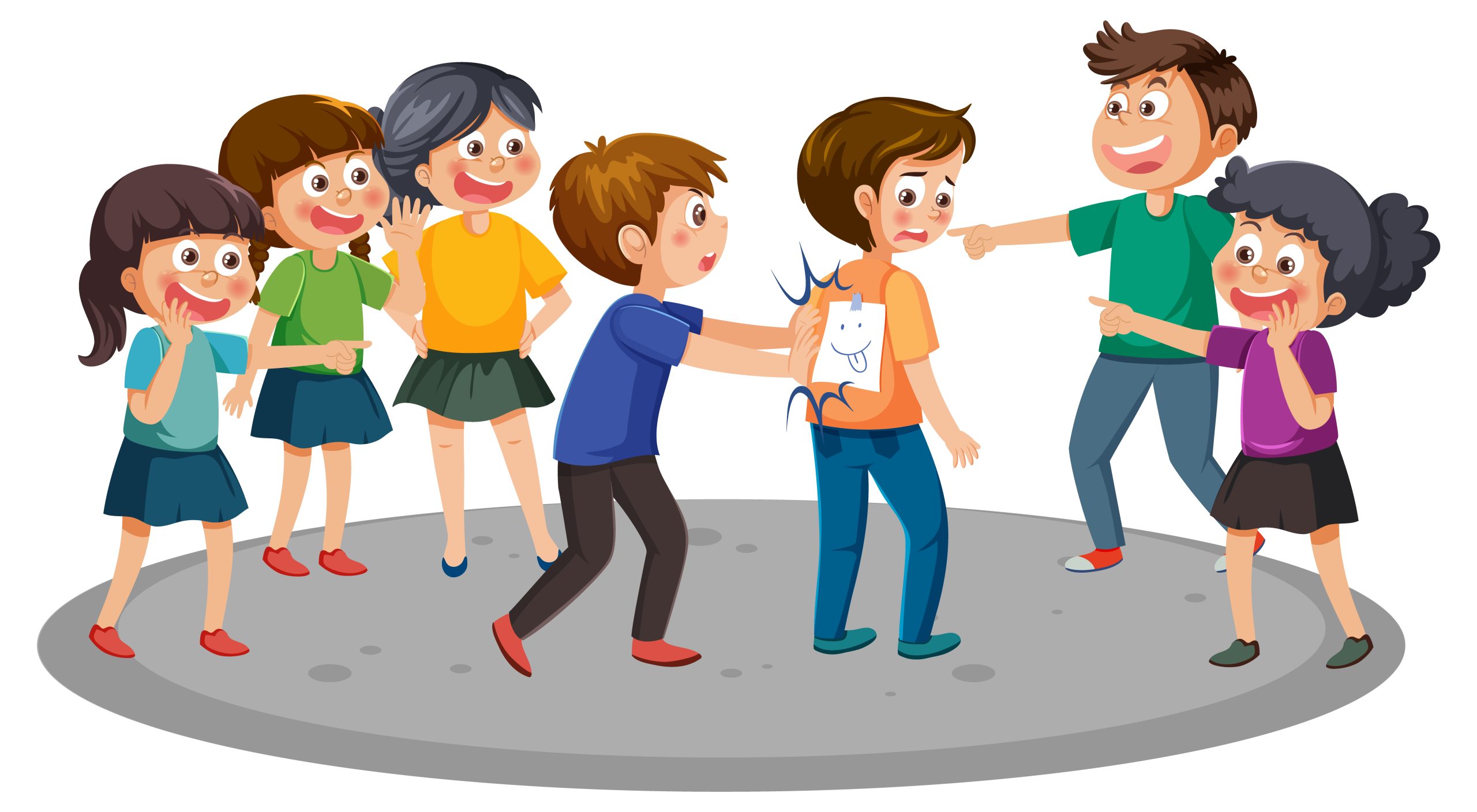Understanding Child Bully Behavior
Child bullying can stem from a variety of reasons, such as seeking attention or dealing with personal insecurities. It’s important to recognize the impact it has on both the victim and the bully to address the behavior effectively.

Possible reasons for bullying
Kids bully for different reasons. Some feel jealous or left out and take it out on others. They might think bullying will make them popular or give them power. Others copy what they see at home, on TV, or from friends. If a child has trouble talking about feelings, they might get angry easily and bully.
Bullying can also start if a child feels unsure and wants control. Stress in the family may lead to picking on someone weaker too. Kids with low self-esteem sometimes push people around to feel better about themselves. In the age of cyberbullying, being online often allows kids to hide behind screens while hurting others without seeing their pain.
Impact on the victim and the bully
Bullying can cause emotional distress in victims, leading to anxiety and low self-esteem. This can also result in academic difficulties and social withdrawal, affecting the overall well-being of the victim. On the other hand, bullies may experience disciplinary actions, struggle with empathy and social relationships, and face long-term consequences such as aggression issues.
Also, try our Bullied Child Evaluation, a valuable resource for understanding the effects of bullying on children and providing support and intervention.
Addressing Child Bully Behavior
When it comes to addressing child bully behavior, communication with your child is crucial. Understanding the root cause of their behavior and teaching them empathy and appropriate social skills can help prevent bullying.
Implementing disciplinary action when necessary is also important in addressing this behavior effectively.
Communication with your child
Open and honest communication with your child is crucial in addressing bullying behavior. Encourage your child to express their feelings, thoughts, and experiences without judgment. Create a safe space where they feel comfortable discussing any issues they may be facing at school or in social situations.
Please help your child understand the impact of their actions by engaging in conversations about empathy and kindness. Discuss real-life scenarios to build awareness of how their behavior can affect others.
Disciplinary action
When addressing child bullying behavior, it’s essential to implement disciplinary action. Consequences such as loss of privileges or structured chores can help the child understand the seriousness of their actions while teaching them accountability and responsibility. Consistent enforcement of these consequences is crucial for reinforcing positive behavior changes and demonstrating that bullying is not tolerated in any form.
Teaching children about the impact of their actions through disciplinary measures can foster a greater sense of empathy and understanding towards others. Implementing these actions while providing consistent guidance can aid in reshaping a child’s behavior, helping them develop into more compassionate individuals with improved social skills.
Teaching empathy and appropriate social skills
To build empathy and appropriate social skills, encourage your child to consider how their actions affect others. Engage them in discussions about kindness, understanding feelings, and considering different perspectives.
Role-playing scenarios can help them practice responding empathetically to various situations, preparing them for real-life interactions. Additionally, arrange playdates or activities that involve teamwork, sharing, and taking turns to promote cooperative behavior.
Reinforce positive interactions by acknowledging and praising respectful conduct towards peers. Modeling empathy in your behavior also sets a powerful example for your child.
In conclusion, child bullying is a prevalent issue affecting one in four children, with significant impacts on victims and bullies. Our Child Bully Assessment on BizCalcs.com helps identify potential bullying situations. Understanding root causes and fostering empathy through communication and disciplinary action are crucial. Teaching kindness and social skills empowers children to navigate interactions positively. Let’s work together, using tools like our Bullied Child Evaluation, to create safer environments and promote empathy in our children.
Additional Resources
Related Assessments
